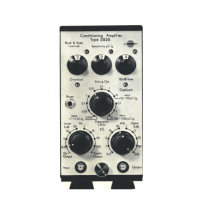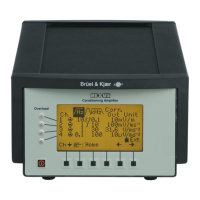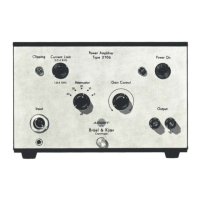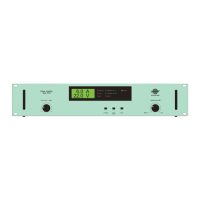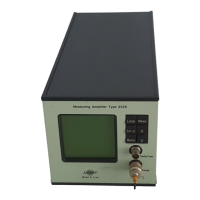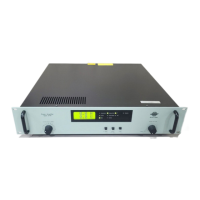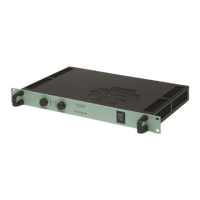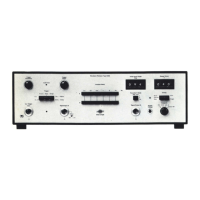The heating element normally requires 6.3
V,and
if
used
with
a
B&K
spectrometer, microphone amplifier,
or
microphone power supply,
this
is
a
DC
voltage.
It
can
be
left
unconnected when using separate" power supplies
if
there
is
no danger
of
condensation.
If
connected
to
a supply, the current
through the heater
should
not
exceed 100
mA
o
If
the yery highest input impedance
of
the preamplifier
is
required,
or
for
any reason the preamplifier
is
to
be
kept cool, the heater should
not
be
used.
The heater supply
will
be
automatically connected when
th
e preamplifier
is
plugged
into
a
B&K
spectrometer, amplifier, etc.
So,
in this
cas
e
it
must
be
disconnected. This
is
best done in the power supply
of
the instrument,
and the service
manual should
be
consulted
to
find
out
where the
circuit
can
be
broken.
3.2
MICROPHONES
The complete
range
of
B&K
microphone
:;
artridges can
be
used
with
the
2619, except
for
the piezoelectric microphone 4117. The microphones and
their
respective adaptors
are
:-
Microphone Adaptor
1"
DB
0375
1/2"
No adaptor required
1/4"
UA
0035
1/8"
UA
0036
The nominal cartridge polarization voltage
is
200
V,
except
for
the 4148,
where
it
is
28 V. For situations where
only
a single power supply
is
available
(e.g.
batteries in a field measurement
set
up) the 2619 can
be
operated
from
a voltage equal
to
the microphone polarization voltage.
The adaptor JJ 2615
is
provided
for
the connection
of
miniature cables,
for
example
from
an
accelerometer,
with
socket
Type
NF
10-32
(B&K
plugs VP 0012). This adaptor contains a 50 pF capacitor
to
block
the 200 V
DC
polarizing voltage required
for
the condenser microphones.
To
provide the microphone
with
some
directional
flexibility,
the flexible
goose-neck extension
is
included. This also enables operation
of
the micro-
phone in temperatures
up
to
150
0
C whilst the preamplifier
is
kept
at
its
lower operating temperature
of
60
0
C maximum.
13

